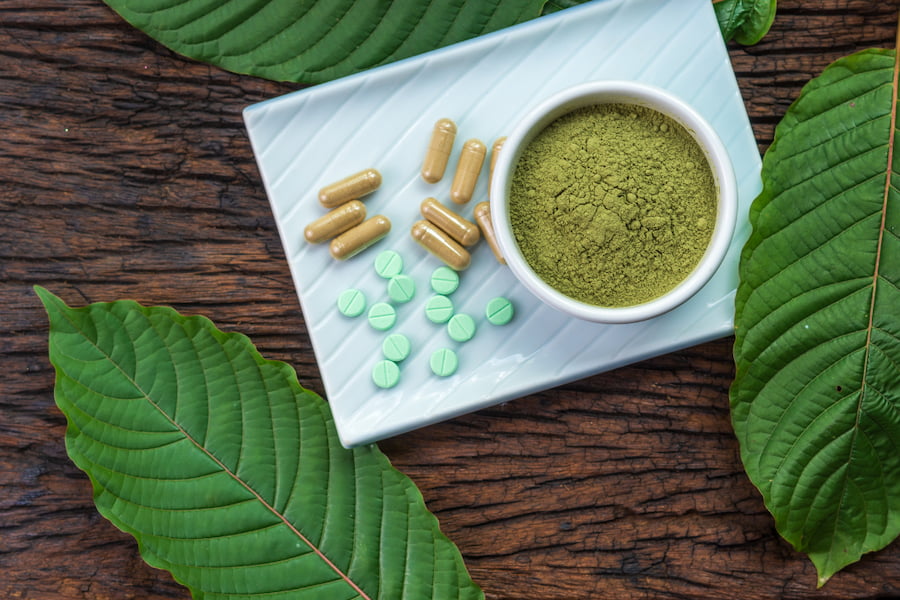Even though kratom often gets grouped together with other health or energy-boosting substances, it’s an herb all its own. Understanding the difference may not seem like a big deal, but knowing that kratom has a separate set of effects, potential benefits, and risks can help you decide if it’s a good fit for you. Since the media and even some government agencies often get it wrong, it’s important to empower yourself with information about this incomparable plant and its properties.
Searching for the truth? Find the facts about kratom below, along with tips for finding kratom shops you can trust.
Kratom is Unparalleled & Unique
It’s currently fairly easy to get kratom by visiting your local gas station or headshop. Unfortunately, kratom’s availability in these spaces (along with its origin in faraway places like Indonesia) often associates it with a certain stigma. Kratom is commonly consolidated into the same category as other, less reputable herbs, and given a bad rap.
Sadly, the dietary supplement market is loosely regulated by the Food and Drug Administration (FDA). Although the FDA has not approved kratom for medical use, it stands apart from other substances. Namely, the FDA has not been able to provide concrete scientific evidence that kratom carries the same risk as other substances. In other words, just because it is “unapproved” doesn’t make kratom dangerous or a threat.
Putting kratom in the same category as other herbs, supplements, or remedies you’ve seen (or tried yourself) may undermine its potential. Even though kratom is commonly compared to items like CBD, java, or energy drinks, it’s important to remember that kratom is a special substance with unique properties.

Putting kratom in the same category as other herbs, supplements, or remedies may undermine its potential.
Kratom vs. Tianeptine
In one stark example, the NYTimes recently published an article warning that the substance tianeptine is commonly known as “gas station heroine” and alarming health officials with its potential for abuse. Then, the article lumps kratom into the same group of substances with no context or follow-up explanation. Worse, the kratom link embedded in the NYTimes article points people to a sensationalized and misleading article from a third-party source rather than the NYTimes own even-handed account of kratom’s pharmacology and potential for abuse.
Yes, there are certain similarities between tianeptine and kratom. They both provide energy-boosting effects. They are both, to varying degrees, μ-opioid receptor (MOR) agonists without actually being true opiates. Yet, the differences are just as stark. Tianeptine is a full MOR agonist, while kratom is only a partial agonist. Tianeptine is an atypical tricyclic antidepressant. Kratom has alkaloid-laden leaves and is in the botanical family as coffee. Tianeptine was developed in the 1960s by French medical researchers. Kratom was discovered millennia ago by indigenous peoples of southeast Asia.
In many ways, the similarities between kratom and tianeptine are more about the way their respective industries market the products and the loose regulatory framework that the FDA uses to classify the supplement or dietary ingredient. Yes, there are bad actors out there making unsubstantiated and even illegal claims about improving brain function, treating anxiety or depression, or relieving pain. We at MIT45 are highly conscientious about not making these types of claims or exaggerating kratom’s benefits. From the basic facts about kratom to the truth about kratom strains to the onset of kratom effects, we encourage you to learn more about kratom and its pharmacology.
What Makes Kratom Special
Kratom is distinct down to its chemical compounds, in particular mitragynine, 7-hydroxymitragynine, and 40+ other alkaloids found in kratom leaves. Without getting too “science-y,” these chemicals are naturally occurring and are believed to be the source of kratom’s potential effects.
One important thing to be aware of is that kratom can have starkly different effects depending on the serving size and individual differences. For this reason, reputable companies suggest starting small, and only increasing the amount you take once you understand your body’s response. Notably, kratom is also more versatile than other substances in that it is reported to be energizing at small amounts and relaxing at larger amounts.
Perhaps the most important distinction between kratom and other “gas station substances” is that it has a lower potential for abuse than products it’s likely lined up next to. According to the American Kratom Association, “Research funded by NIDA has directly contradicted the FDA claims that kratom has a high addiction liability.”
The NIDA (National Institute on Drug Abuse) has said as much, too, stating that they support and conduct research to “evaluate potential medicinal uses for kratom and related chemical compounds” and “towards better understanding the health and safety effects of kratom use.” Yet another well-researched statement from the NIDA helps confirm that kratom is different from its so-called counterparts: “Compared to deaths from other drugs, a very small number of deaths have been linked to kratom products and nearly all cases involved other drugs or contaminants.”
Finding Kratom You Can Trust
Lamentably, not all kratom companies hold themselves to the same high standards that MIT45 does. In order to tap into kratom’s exceptional qualities, be sure to seek out sellers that take extra measures to promote safety, effectiveness, and strength. For example, look for the following wording on the product label or website page:
- American Kratom Association (AKA) Good Manufacturing Practices (GMP) Qualified Kratom Vendor
- Contact information (to ask about unknown or unlisted ingredients)
- Third-party testing, lab testing, or Certificate of Analysis
Be especially wary of brands making health claims, or of companies that have been issued warnings from the FDA. If you’re still on the fence about a product after doing your own research, check to see if the company you’re looking at has had lots of bad press or reviews lately (and why).
The bottom line is that just because you may be familiar with coffee, kava, CBD, or other substances, your body may not react to kratom the same way. It’s key to approach kratom as a new potential solution you need to “get to know” on its own merits.

In order to tap into kratom’s exceptional qualities, be sure to seek out sellers that take extra measures to promote safety, effectiveness, and strength.
Summing Up Kratom as Singular Sensation
Although kratom is often lumped together with substances that share some similarities, it’s truly its own thing and, more importantly, is believed to have lower risk of abuse than the products it’s often stacked up against. Kratom is unique down to the chemical level, where its notable compounds are thought to be responsible for its special effects. While still waiting on popular news, media, and government outlets to acknowledge the existing evidence in kratom’s favor and admit it’s not quite the threat they thought, sources like the American Kratom Association and National Institute on Drug Abuse are helping to make strides in kratom research.
Has your curiosity about kratom been peaked? Once you’ve had a chance to learn more about kratom, we invite you to browse our product collection. Any Raw Leaf product would be a solid choice for beginners or BOOST Bites for a fast-acting extract inside a tasty gummy that’s designed to ease you into the kratom experience.
References
Hoffman J. ‘Gas-Station Heroine’ Sold as Dietary Supplement Alarms Health Officials. The New York Times. Published January 2024.
Blum D. What You Should Know About the Potential Risks of Kratom. The New York Times. Published July 2023.
American Kratom Association. Policy Brief- Is Kratom Safe? Americankratom.org. Published January 2021.
Karunakaran T, Ngew KZ, Zailan AAD, Jong VYM, Bakar MHA. The Chemical and Pharmacological Properties of Mitragynine and Its Diastereomers: An Insight Review. Front Pharmacol. 2022;13:805986.
National Institute on Drug Abuse. Kratom. Nida.nih.gov. Published March 2022.




